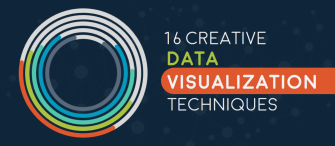Did you know the volume of data consumed will nearly double by 2025? That includes not only data captured but also data created and copied. It is also one reason many charts depict information more than ever. These data visualization charts can help businesses in many ways.
- They help stakeholders understand how the company is doing from a growth perspective. Click here to understand how this growth perspective works in an organization with these creative data visualization techniques.
- Building trust in the company amongst customers is also another stronghold of data visualization charts, as numbers tell a far more convincing story than words.
Data visualization charts also help teams with new initiatives. These serve varied purposes according to what is displayed. Here is a roundup of five charts that can help businesses soar to new heights.
Template 1 Google Charts Tool for Data Visualization PPT Presentation File Aids
Google Charts can be handy for extracting data from sources, including SQL Databases and Google Sheets. They are a popular alternative for professionals wanting to create live dynamic visualizations. The editable PowerPoint presentation templates let you add charts, such as Dynamic, Bar Chart, and Geo Chart. Google charts work on HTML/SVG technology; companies can use these as alternative data visualization tools. So, what are you waiting for? Download this template right now!
Template 2 Business Executive Performing Data Visualization using Project Gantt Charts
Project Gantt Charts are a set of premium slides that represent information. They are adaptable PowerPoint templates that you can use to describe topics, including Business Executives Performing Data Visualization Using Project Gantt Charts. Download these charts and start using them today!
Template 3 Four-stages Data Visualization through Doughnut Charts
The six-slide Doughnut Charts PowerPoint Presentation represents stages in data visualization, including data management and data representation. Business executives can use these editable slides to describe data and draw inferences. Don't wait long. Download the Doughnut Charts PowerPoint slides now!
Template 4 Data Visualization Online Business Reports
Charts and Analysis
Business report charts depict market trends and can be used to generate and view reports. This presentation has six editable slides you can use with PowerPoint or Google Slides. Use this chart to showcase how Google Slides can be used to make a point, and create strategies that work. Download now!
Template 5 - Data visualization icon with multiple charts
These are slides where you can use multiple charts to represent data. Data represented using these charts is in three stages. You can use any chart, including bar graphs, pie charts, and line graphs, to show market trends, business reports, or other data or information. Download today!
LEARN DATA, HAVE AN ACE UP YOUR SLEEVE
These five are the best visualization charts when it comes to capturing, creating, and representing facts and figures. With the help of Data visualization ppt, you can easily communicate with your customers, employees, managers, and investors. Make time to learn data visualization techniques, which will be helpful in investor meetings and other instances.
FAQs on Data Visualization Charts
What charts are helpful for data visualization?
You can use charts for visualizing data, including Project Gantt Charts, Business Report Charts, Bar Charts, Line Charts, and Pie Charts. These tools help capture and represent facts and figures and create them using information you have gathered. The templates consisting of charts can help businesses communicate with their customers, employees, managers, and even investors, and find uses in meetings and other instances.
What are the types of data visualization?
There are two main types of data visualization: static and interactive. Static visualization represents data as static visuals, such as infographics or charts, while interactive visualization represents data as slides. The uses of these data visualization charts depend on circumstances. For instance, static charts may help develop electronic schematic diagrams illustrating the device and its parts. Interactive charts, however, may be used for business purposes to indicate facts and figures and make changes to the business structure over time, with the use of that information.
What are the common variations of data visualization charts?
Data visualization charts come in two variations: common variations and special variations. The standard variation charts include histograms, stacked and grouped bar charts, dot plots, area charts, dual-axis charts, and bubble charts. Special variations of data visualization charts may comprise pie charts showing each item’s percentage, funnel charts with a pipeline flow depicting data in a downward manner, bullet charts representing data as markings in a bar graph, and map-based plots.
What are the common types of variables in data visualization?
The most common types of data visualization variables are numerical and categorical. You can measure numerical variables. They are quantitative variables and answer the questions, 'how many?' or 'how much?' These quantities may be ratios, intervals, ordinals, or nominal values.
What chart is most suitable for variations?
You can use the column chart, the most used chart, to represent variations. The chart can be used to compare values, especially when they are specific and important, and expect users to compare each column. The idea behind variations is to take collective steps and ensure that performance, in a team setting, is tracked well to the satisfaction of all.





 Customer Reviews
Customer Reviews









![[Updated 2023]: Top 20 Comparison PPT Templates for Effective Data Visualization](https://www.slideteam.net/wp/wp-content/uploads/2020/12/size1001-436-5-335x146.jpg)











